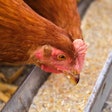Exceptionally high fuel costs have made 2008 a tough year for anyone involved in planning the delivery of animal feeds from mill to farm. Most such deliveries are undertaken by road and, in these circumstances, fuel has come to challenge labour as the single, largest component of overall transport costs.
Specialists in logistics say that the total cost of transporting feeds has increased so much in the past 12 months that every mill operator must take a second look at seeking out and satisfying new clients. In many cases, they calculate the effective maximum delivery radius that is acceptable and in the latest cost structure, that works out to approximately 300 kilometres. However, it seems to be more and more the case that a road journey of little more than half that distance will already prove uneconomical unless the client enterprise is large and its feeds are always ordered in bulk on a regular routine.
Economics of single-species plants
One consequence of such calculations is that the single-species mill looks to set a particular challenge in terms of logistical economics. Plants dedicated to one farm species have been promoted by regulation and by the financial attraction of having larger, uninterrupted production runs. But any savings realised at the processing stage may now be lost because of more expensive transport to reach the exclusive clientele.
On the other hand, a consistent finding from analyses in the European feed sector has been that inefficiencies in transport represent an increasing proportion of total costs along a supply chain. The continued existence of opportunities for more efficient haulage was highlighted in the UK, for example, by a value chain analysis conducted about three years ago by Cranfield Business School on behalf of the Cereals Industry Forum. The study looked at the efficiency of the complete chain, from grain grower through to the producer of poultry meat.
Distribution practices
Regarding distribution practices, there was praise for the fact that the poultry producer's own fleet of vehicles carried feeds from the mill, as this was thought to help maintain more control over logistics and ensure that the farms received their feed requirements on time. A possible opening toward achieving further improvement was identified in reducing delays and inefficiencies associated with the transportation of raw materials into the mill.
Turn-around times for the loading of grain at farms and for reception at the mill should be investigated, said the report. Moreover, all wasted mileage should be analysed. The research team also wanted to see better communication by improving the flow of information throughout the chain, particularly with a focus on feed inventory levels at the poultry farms. This would avoid disruptions in orders, they pointed out, which invariably trigger changes in scheduling at the mill and so result in more down-time. Records indicated that an average of around 10 hours per week had been lost at mill level because of avoidable changes to the orders sent by the farms.
Optimising routes
More recently, there have been claims by a software company based in the UK that it is possible to cut transport costs up to 20%. Reductions of this size can be made through the use of optimised schedules and routes, it insisted. Such transport optimisation has been shown to be capable not only of reducing the distances travelled to make deliveries, but also of improving the utilisation of drivers and vehicles.
Computer programs for streamlined distribution have been adopted elsewhere in the food chain, such as when a US egg producer and processor wanted to centralise its planning of deliveries by a large fleet across a significant area of the country stretching from the Pacific Northwest and Alaska to the Midwest. For this purpose, it chose a computerised fleet programming package developed by British company Paragon Software Systems and applied the software to the daily planning of a 100-vehicle collection and delivery operation involving 15 farm, processing and distribution sites and 800 customers.
The system's plans for the 2,400 weekly deliveries automatically accommodates time-window restrictions ranging from five minutes to 24 hours, according to the supplier, along with any product load incompatibilities and the additional transport services provided to some customers. The eggs company sees the potential for benefits ranging from reduced empty running to increased visibility.
On the feed scene, using similar computer software has already reduced empty running at British compounder BOCM Pauls, said another of the supplier's reports. The software's adoption to plan the feed company's national logistics operations at regional level gave a big cut in empty mileage and transport costs. This has meant substantial savings for a 100-vehicle operation distributing 150,000 metric tons of feed to over 7,000 destinations every month.
Major business change
Most recently, a fully-automated fleet logistics platform has replaced manual planning of transports at another feed manufacturer in the UK. The company is the ABN division of international group AB Agri and the high-tech solution has again been supplied by Paragon.
The installed Integrated Fleets software integrates with ABN's order processing programs so that orders become visible instantly for optimising routing and scheduling of the company's entire fleet of specialised articulated trucks, says Paragon. Visibility is a watchword in the sense that the system offers additional screens for use in individual mills.
"This has enabled a major business change at ABN from previously local, manual planning at each mill to centralised, automated planning," comments Chris Barnes, national logistics manager at the British feed company. "The increased control and central visibility has delivered significant mileage and cost savings, through more efficient interworking of previously separate fleets, while at the same time meeting all our customers' delivery demands.




.jpg?auto=format%2Ccompress&fit=crop&h=167&q=70&w=250)












